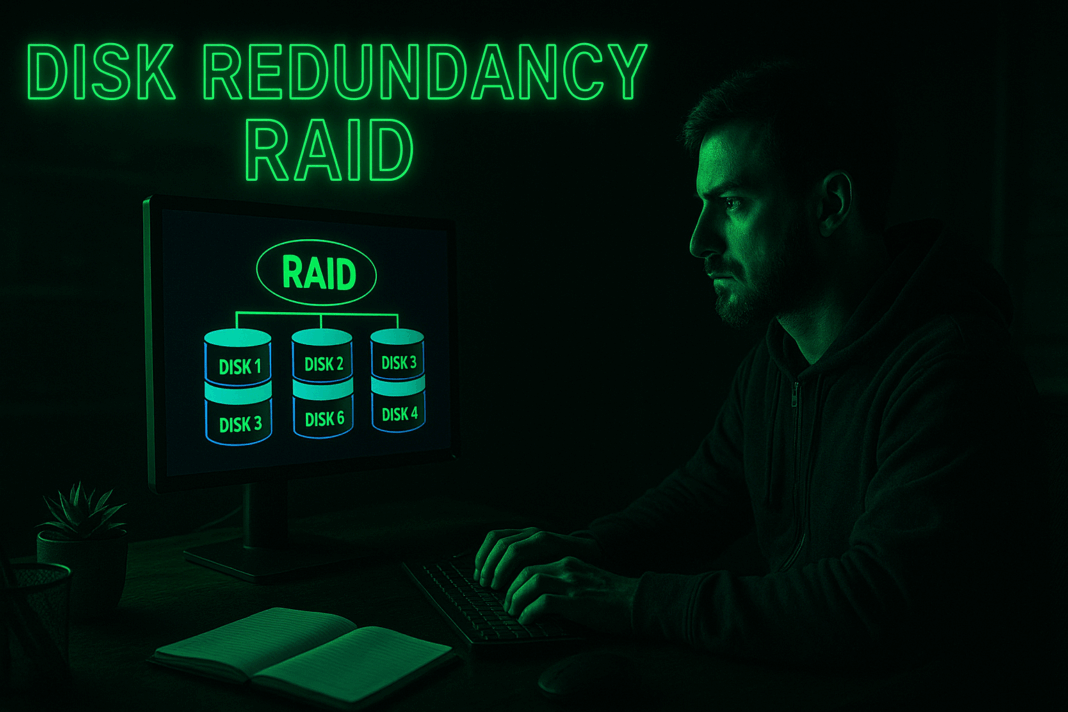
Disk redundancy through RAID (Redundant Array of Independent Disks) is a method used to protect data and improve performance by combining multiple hard drives into a single logical unit. The main purpose of RAID is to provide data redundancy (protection against data loss due to disk failure) and/or performance improvement.
Here are the most common RAID levels explained in simple terms:
RAID 0 (Striping)
Data is split into blocks and each block is written to a separate disk drive. It increases performance since multiple disks are read/written simultaneously, but there’s no redundancy if one disk fails, all data is lost.
RAID 1 (Mirroring)
Data is copied identically to two or more disks. It provides redundancy since each disk contains a full copy of the data, if one disk fails data can still be accessed from another disk. On the other hand it requires twice the storage capacity because data is duplicated.
RAID 5 (Striping with Parity)
Data and parity information (used for recovery) are striped across three or more disks. Parity information allows data to be reconstructed if a disk fails. It provides a good balance between performance, storage capacity, and redundancy. If one disk fails, it can use the parity information to reconstruct the lost data from the failed disk on-the-fly, though it will run in a degraded mode and performance will be reduced until the failed disk is replaced, if a second disk fails the RAID 5 array loses the ability to reconstruct the data. Performance during write operations is slower compared to RAID 0 and RAID 1 due to the parity calculations.
RAID 6 (Striping with Double Parity)
Similar to RAID 5, but with additional parity block, allowing for recovery from the simultaneous failure of two disks. If one disk fails, it can reconstruct the lost data with parity information, with the cost of reduced performance. If two disks fail, it can still reconstruct the lost data using the double parity information. but with further reduced performance until both failed disks are replaced and rebuilt. It has a slower write performance due to additional calculations and required more storage than RAID 5, but it provides a higher fault tolerance.
RAID 10 (RAID 1 + 0)
It combines RAID 0 and RAID 1 by striping data across mirrored pairs of disks. It offers high performance and redundancy, if a disk fails the system can continue operating using the mirror, but it requires a minimum of four disks and has a high cost due to mirroring.



















